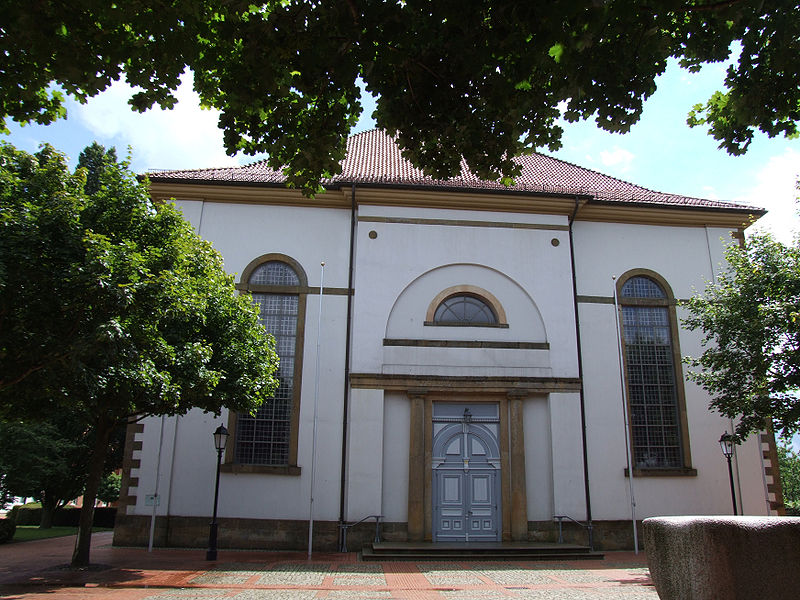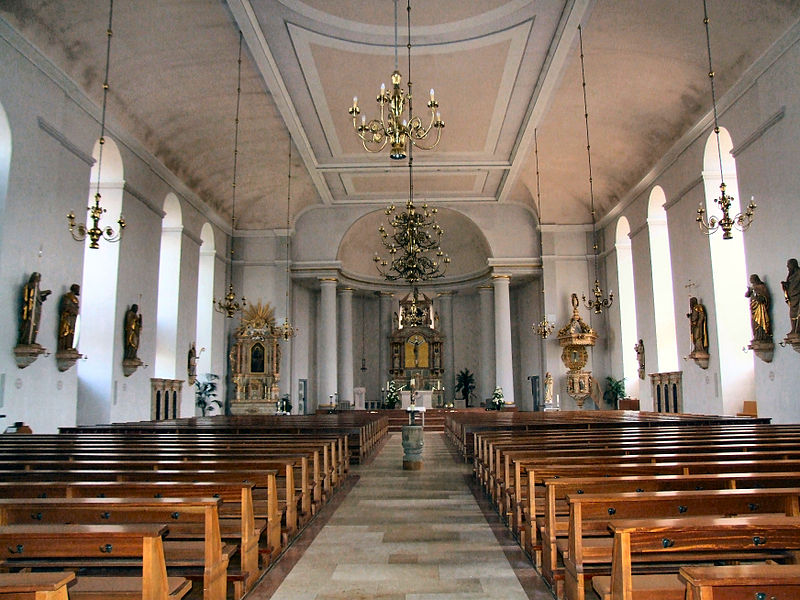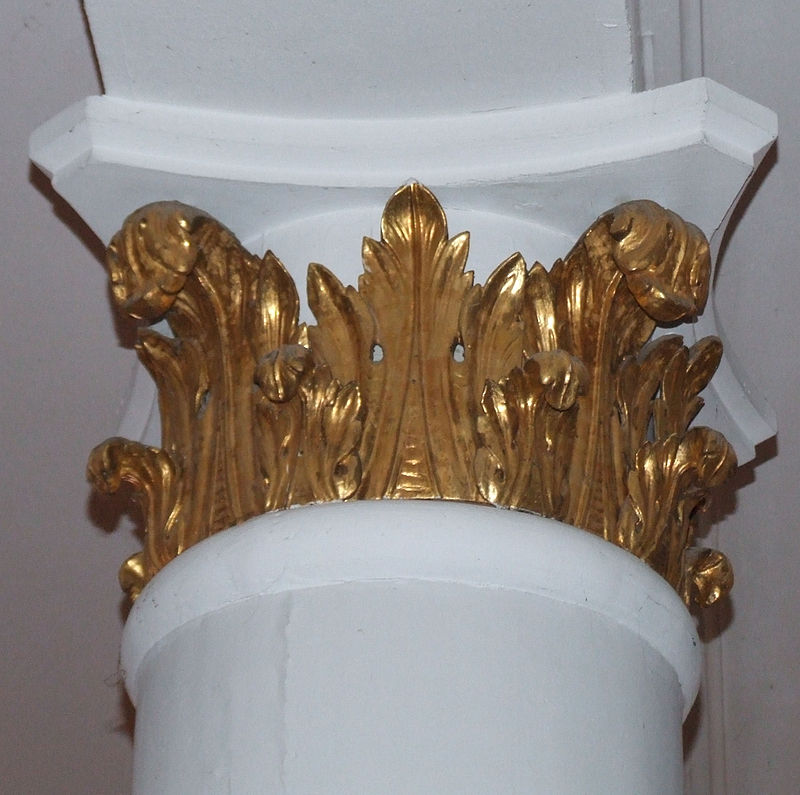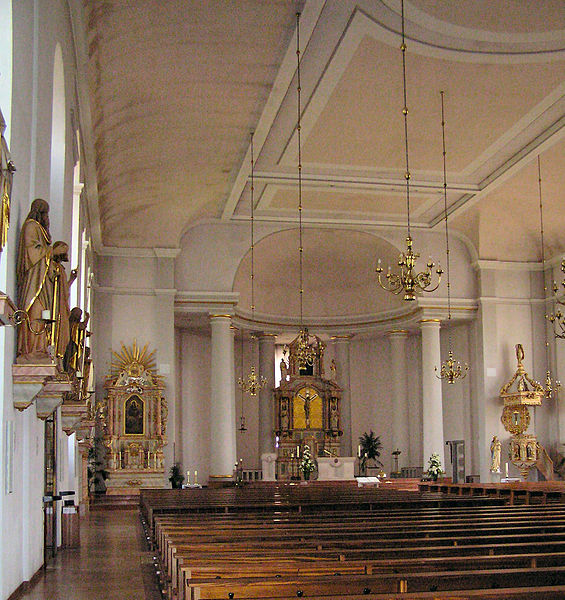St. Vitus, Löningen

Facts and practical information
The Catholic parish church of St. Vitus in Löningen is one of the oldest church foundations in the Oldenburg Münsterland region. As a replacement for the medieval parish church, which had become too small, a spacious neoclassical hall building was erected between 1809 and 1813 under the direction of master builder Johan Nepomuk Schmidt. It has a seating capacity of 1200 and is considered the largest pillarless hall church in Germany. The church is also remarkable because, as a Catholic sacred building, it incorporates building traditions of Protestant preacher churches, in which the preaching of the word is central. In addition to a functional floor plan, the interior is restrained and the pulpit is located near the altar on the chancel wall.
The cubic structure of the sacred building, with an internal width of 21.50 meters and a roof that is hipped on all sides, was originally connected to a bell tower on the eastern side of the choir, which collapsed soon after it was built and was replaced by several wooden towers, each of which also quickly became unstable, until the present massive 54-meter-high tower, freestanding in the manner of a campanile next to the church, was completed in 1960.
Much of the church furnishings come from the Baroque church of the Franciscan monastery in Vechta, which was secularized in 1816.







